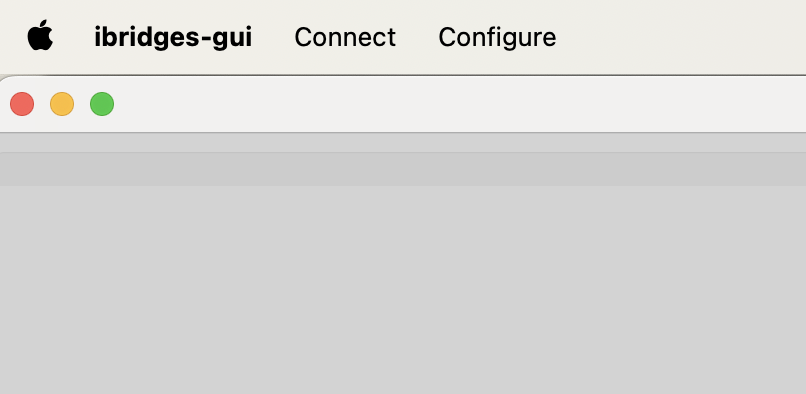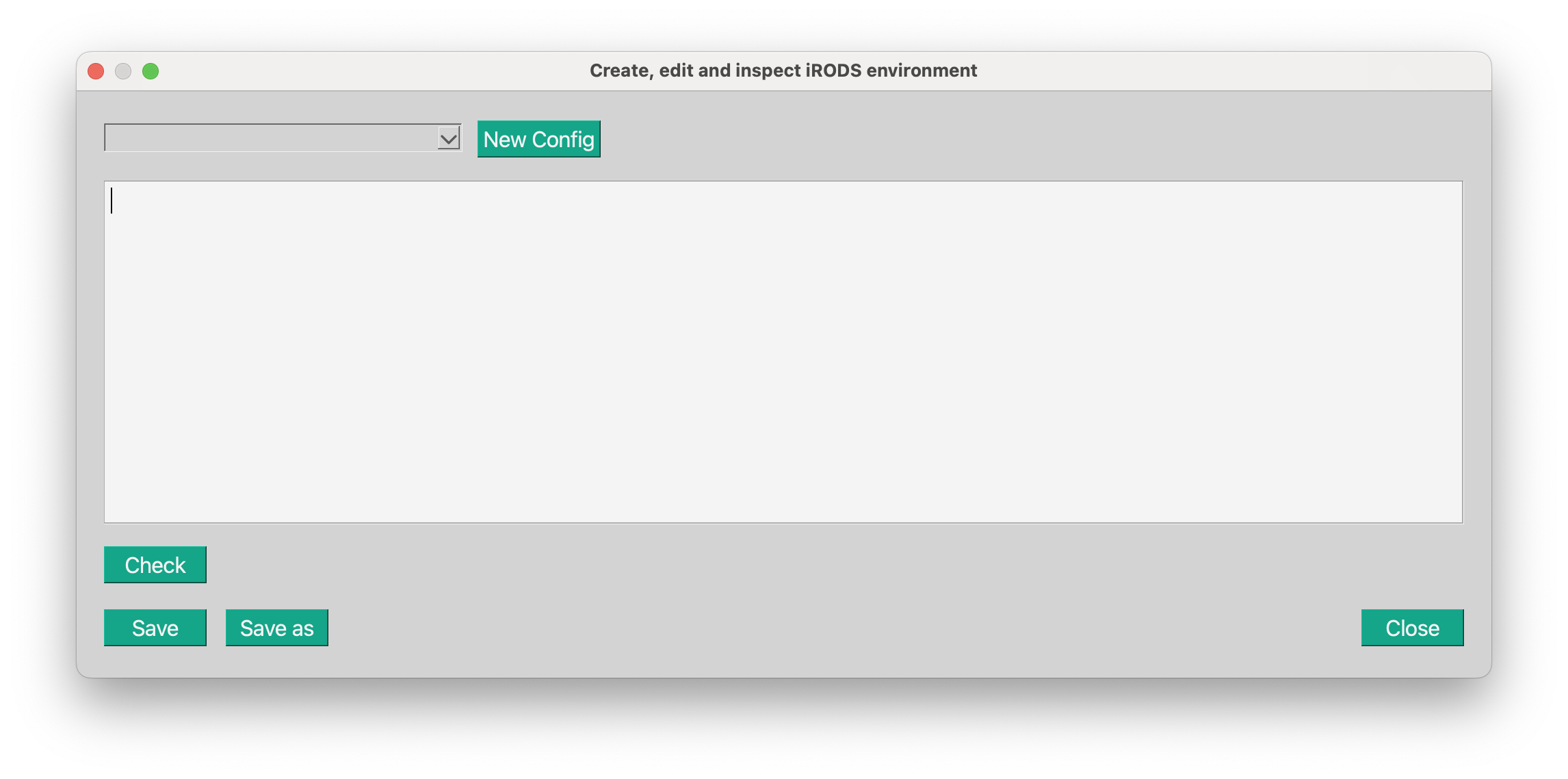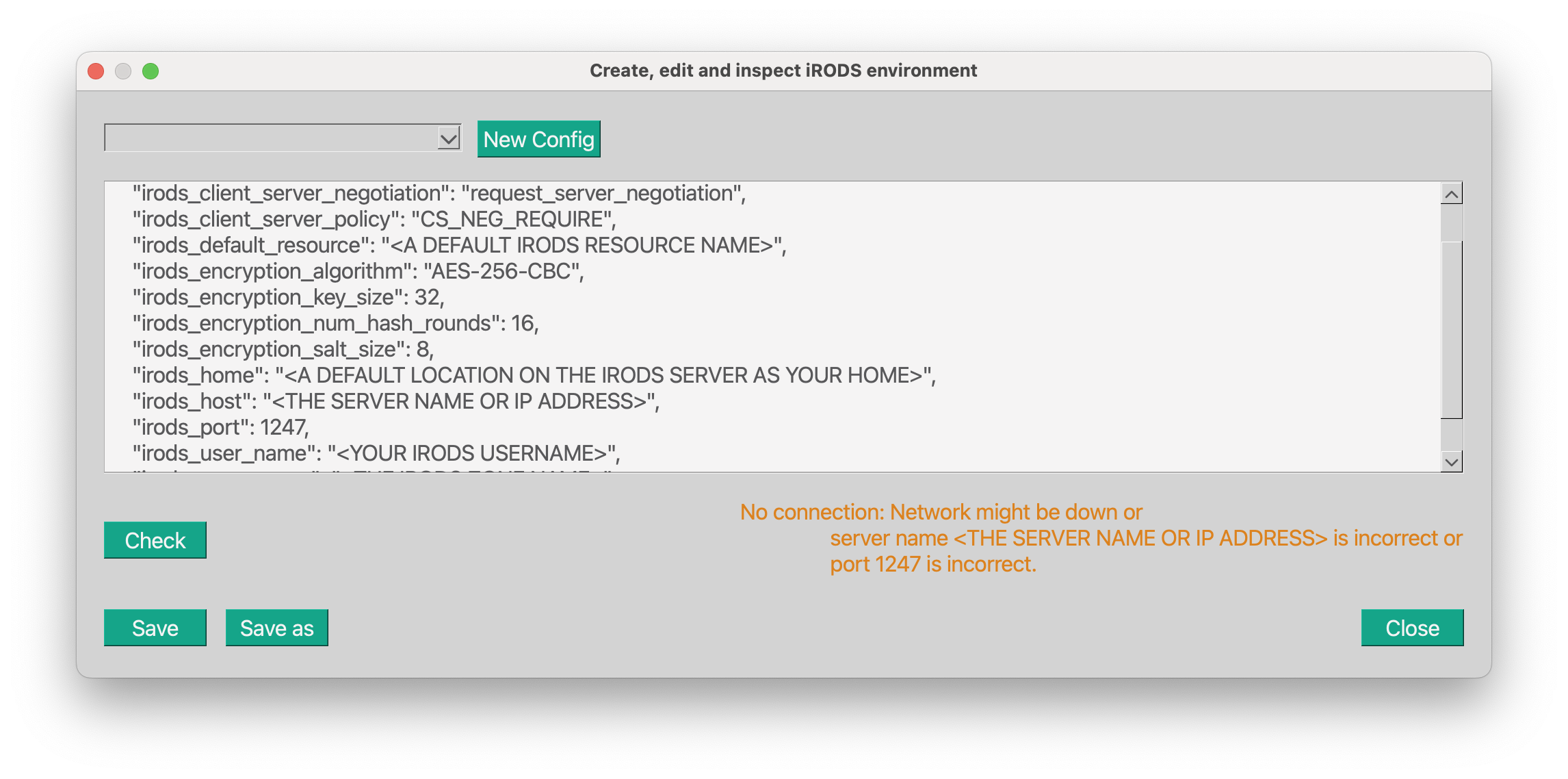Getting started with iBridges-Gui
Install iBridges-gui
pip install ibridgesguiStart the program
Please start iBridges-Gui by typing ibridges gui on your terminal and hit enter.
Configuring iBridges-Gui
To connect to the server you need a configuration file, a so-called irods_environment.json. You can create one for yourself using templates, editing default settings we provide for you or simply create such a file.
Installing iRODS server templates
We have created a plugin system to automatically create the environment file for you. Please follow the documentation how to set it up.
Creating an iRODS configuration file
When you start iBridges you will find in the upper drop-down menu Connect and Configure.

Let us check or create a valid configuration file; Click on Configure -> Add Configuration.

Existing configuration files
In the drop-down menu you will find previously created iRODS environments, they start with irods_environment and end with .json. Select the one you want to check.
Creating a configuration from a template
If you do not have an iRODS configuration yet, and you installed a plugin (see above) you can select a configuration template from the drop-down menu. You will have to add your username and save as irods_environment.json.
Creating a new configuration
To create a new environment click on the button New Config. You should see now something like:

Click the Check button to find out whether you can make a connection to the iRODS server. If you get error messages, adjust the contents accordingly. If you are unsure, please contact your iRODS service provider.
Once the check runs through fine click the Save or Save as button. This will store the adjusted configuration in the correct directory on your laptop so that we can use it for the login (See Section below).
Start an iRODS session
To start working with data in iRODS select Connect -> Connect to iRODS. This will open the pop-up window

Executables
Since iBridges version 1.4.0 we are offering to download executables or to build them. Please note, that this feature is still in experimental state.
Prebuilt executables
Go to the Releases page. In the latest releases you will find three zip-files, these contain the prebuilt application. Download the respective zip-file for your system and unpack it. In the unpacked folder there is a file ibridges_gui.[exe, sh] For Windows simply click on the exe-file, for Mac and Linux open the file with a shell bash ./ibridges_gui.sh.
Building Executables
We offer build scripts in case you would like to compile iBridges and distribute the executable.
python3 build_tools/build_script.py -h
usage: build_script.py [-h] [--debug_exe] [--rem_venv]
[--code_folder CODE_FOLDER] [--ui_folder UI_FOLDER]
[--icons_folder ICONS_FOLDER] [--venv VENV]
iBridges-Gui exe creator.
options:
-h, --help show this help message and exit
--debug_exe Build executable with debug console
--rem_venv remove virtual environment
--code_folder CODE_FOLDER
Full path to the directory with code
--ui_folder UI_FOLDER
Full path to the directory with ui files
--icons_folder ICONS_FOLDER
Full path to the directory with the icons
--venv VENV Full path to virtual python environmentThis will create a virtual environment venv in your iBridges folder. Next to that you will find a new folder build and ibridgesgui_dist. The executable can be found and started like this for Mac and Linux:
./output/ibridgesgui/ibridges_gui.binFor Windows simply click on the file output/ibridgesgui/ibridges_gui.exe.
Select the file we edited above from the drop-down menu and provide your password. If you already logged into iRODS with this or another iRODS client your password might still be cached. This is indicated by the ******. Hit <Enter> or press the Connect button.